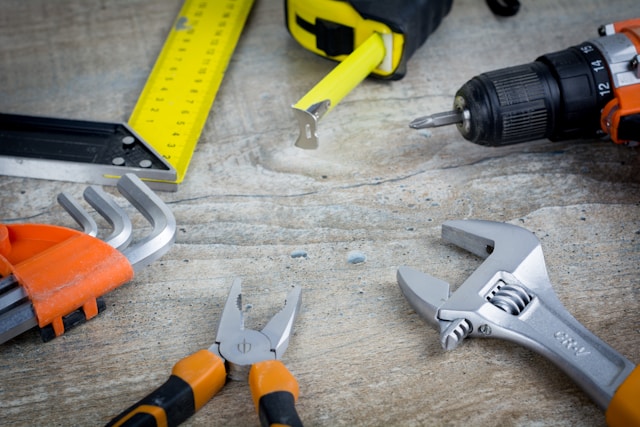The process of relocation to a new home can be both exhilarating and challenging. Relocation for individuals with disabilities often magnifies these emotions, given the distinct hurdles many individuals face. Understanding the specific challenges that people with disabilities encounter is the first step towards creating a seamless moving experience. These unique issues require keen attention, from physical barriers in new environments to the psychological strain of adapting. Fortunately, you can effectively address these challenges with the right approach and tools. This guide aims to provide practical solutions and advice meticulously tailored to meet the diverse needs of those with disabilities.
Planning Ahead: Laying the Foundation for a Seamless Move
Starting preparations early on is a strategic move that brings multiple benefits. The luxury of time offers room for thorough planning, reducing the rush and potential oversight of crucial details. One highly effective strategy is to create a customized checklist to accommodate one's specific disability.
Open communication is another cornerstone of a successful move. Discussing plans and concerns with family members helps ensure everyone is on the same page, offering support where necessary. Moreover, maintaining transparency with professional movers is equally vital. By sharing details about one's disability and related requirements, movers can better prepare, equip themselves, and make necessary adjustments.

Selecting the Right Moving Company: Expertise Matters
Choosing a suitable moving company ensures they have the expertise to cater to specific needs. It's crucial to prioritize companies with a proven track record in handling moves for individuals with disabilities, as they can provide specialized equipment and trained personnel for a hassle-free move. Before settling on a moving company, ask about their familiarity with disability-specific requirements. Many reputable long-distance movers in Washington, DC, for instance, have taken the initiative to offer tailored solutions that consider the distinct needs of their clients, ensuring that the process remains smooth, efficient, and stress-free.

Packing Tips: Simplifying the Process for Everyone
One straightforward yet impactful tip to make packing more manageable for everyone involved is using clear labeling. Marking boxes with their contents or room destination can expedite unpacking and minimize confusion. Properly labeled items are especially beneficial for those with disabilities, allowing them to locate what they need without searching. Another practical consideration is to invest in specialty packing materials or containers. Use cushioned inserts, adjustable compartments, or boxes with handles designed to protect and secure items while being easy to handle. Here are some of the other tips you should follow:
- Start early and plan ahead.
- Choose medium-sized boxes for easier handling.
- Keep a list of items you’ve packed so you do not forget anything.
- Assistive device preparation is key.
Accessibility Matters: Ensuring the New Home is Ready
Ensuring a new home is ready for individuals with disabilities is essential for a successful move. That means verifying that the new residence complies with the Americans with Disabilities Act (ADA) standards, where applicable. Assess the property firsthand and identify areas that need adjustments or improvements. Based on this assessment, you can make the necessary modifications. Before moving day, it is essential to install ramps for wheelchair access if there are steps, widen doorways to at least 32 inches for easy passage, and ensure sufficient turning radius in key areas like the bathroom and kitchen. Bathrooms should be equipped with grab bars and a roll-in shower if necessary, and adjustable countertops can make kitchens more functional. For those with visual impairments, tactile indicators and good lighting are vital.
Moving Day: Keeping Stress at Bay
One effective way to maintain order and reduce anxiety on a moving day is by designating a trusted individual to oversee the move. This person can act as a liaison between the movers and the family, ensuring everything goes according to plan and addressing potential issues. Alongside this, having a personal essentials bag can be a lifesaver. This bag should contain items needed for the first day or two—medications, toiletries, a change of clothes, and any other immediate necessities. It ensures critical items remain within reach, even amidst the furniture and boxes.

Relocation for Individuals with Disabilities: Overcoming Mental and Emotional Challenges
- Acknowledge Your Feelings: Allow yourself to feel stressed or anxious about the change.
- Seek Support: Join online forums or local support groups for individuals with disabilities to share experiences and advice.
- Stay Organized: Break down tasks into small, manageable steps to avoid feeling overwhelmed.
- Maintain Routines: Schedule packing and moving tasks around your most comfortable times of the day.
- Self-Care: Engage in activities that you enjoy and find relaxing.
Unpacking and Settling In: Tips for a Smooth Transition
It's crucial to approach the unpacking phase with a strategy. Prioritize immediate needs, ensuring that essential items are accessible without delay. It might mean focusing first on the kitchen or bedroom to establish a sense of normalcy as soon as possible. Use this golden opportunity to declutter. Think of it as a fresh start, removing items you no longer need and organizing the new space efficiently. And while unpacking can seem tedious, involving family or friends can transform it into a fun, collective activity.
Conclusion
Relocation for individuals with disabilities is no small feat. Every box packed, every obstacle faced, and each hurdle overcome deserves recognition. After settling in, it's essential to indulge in self-care, allowing the body and mind to recover from the move's demands. Taking moments to relax, enjoy the new surroundings, and reflect on the achievements can be invigorating. As the dust settles, it's also a time to anticipate the exciting opportunities the new environment offers.



.jpg)

